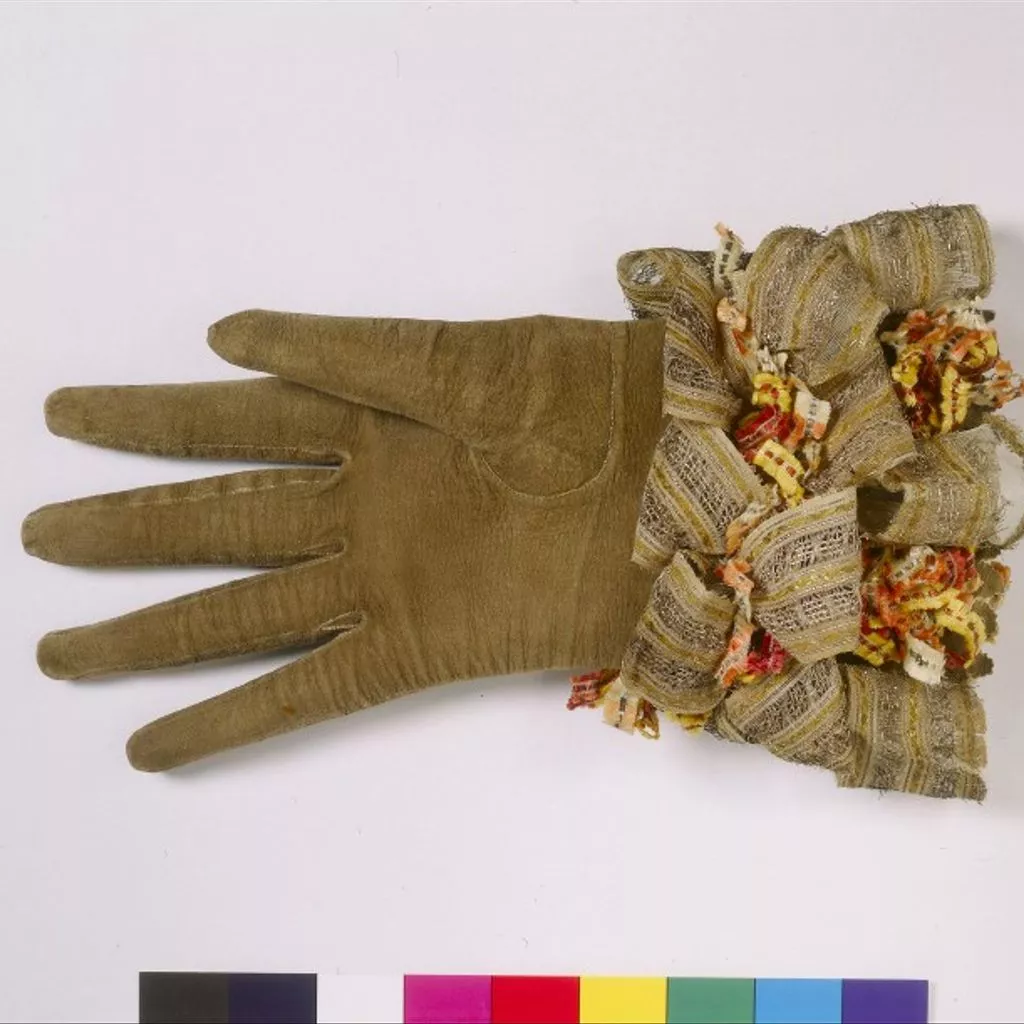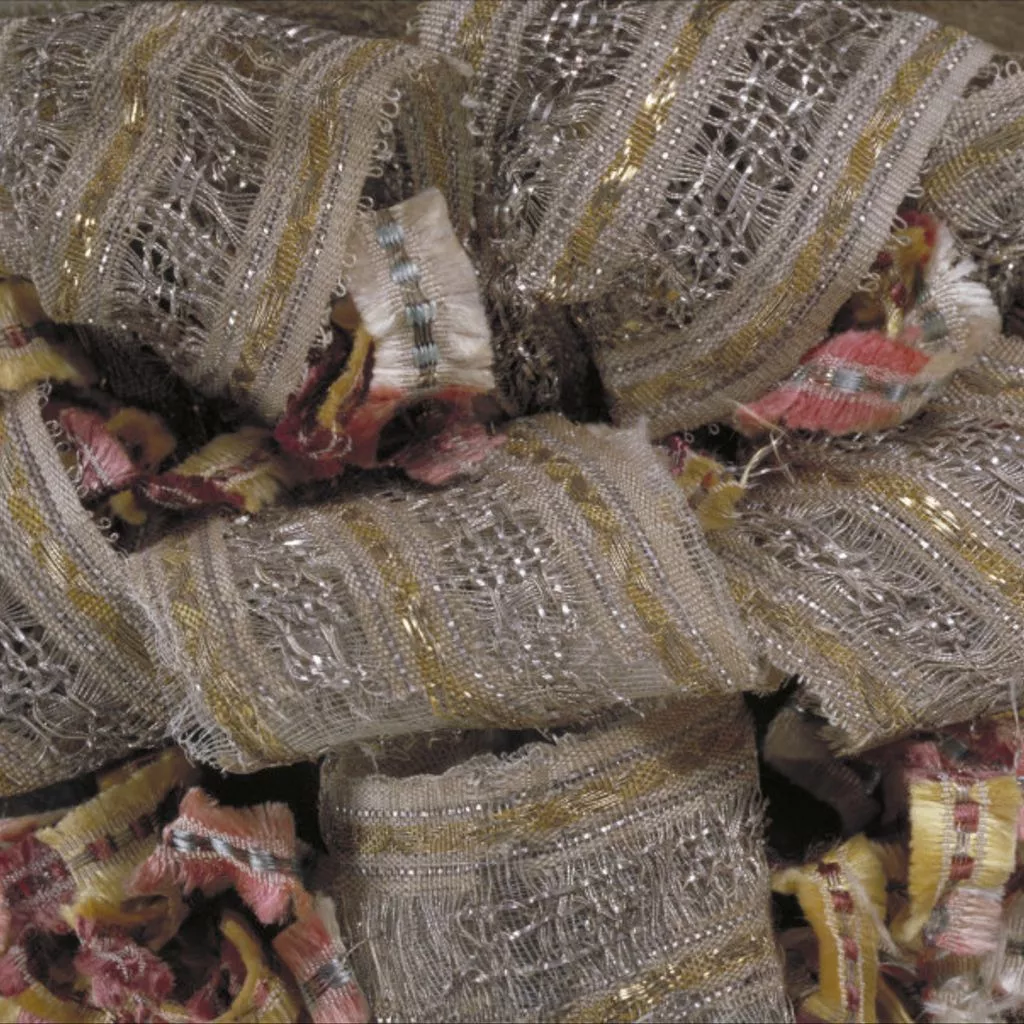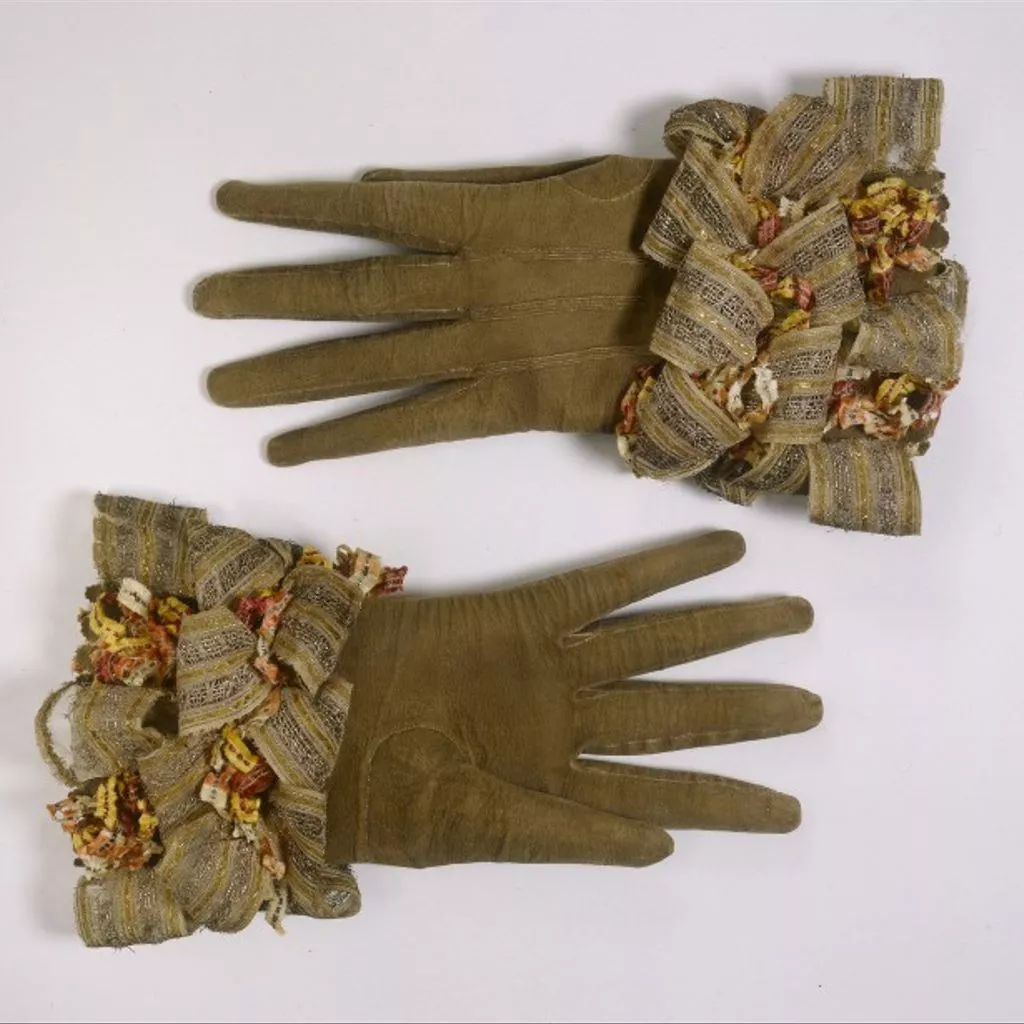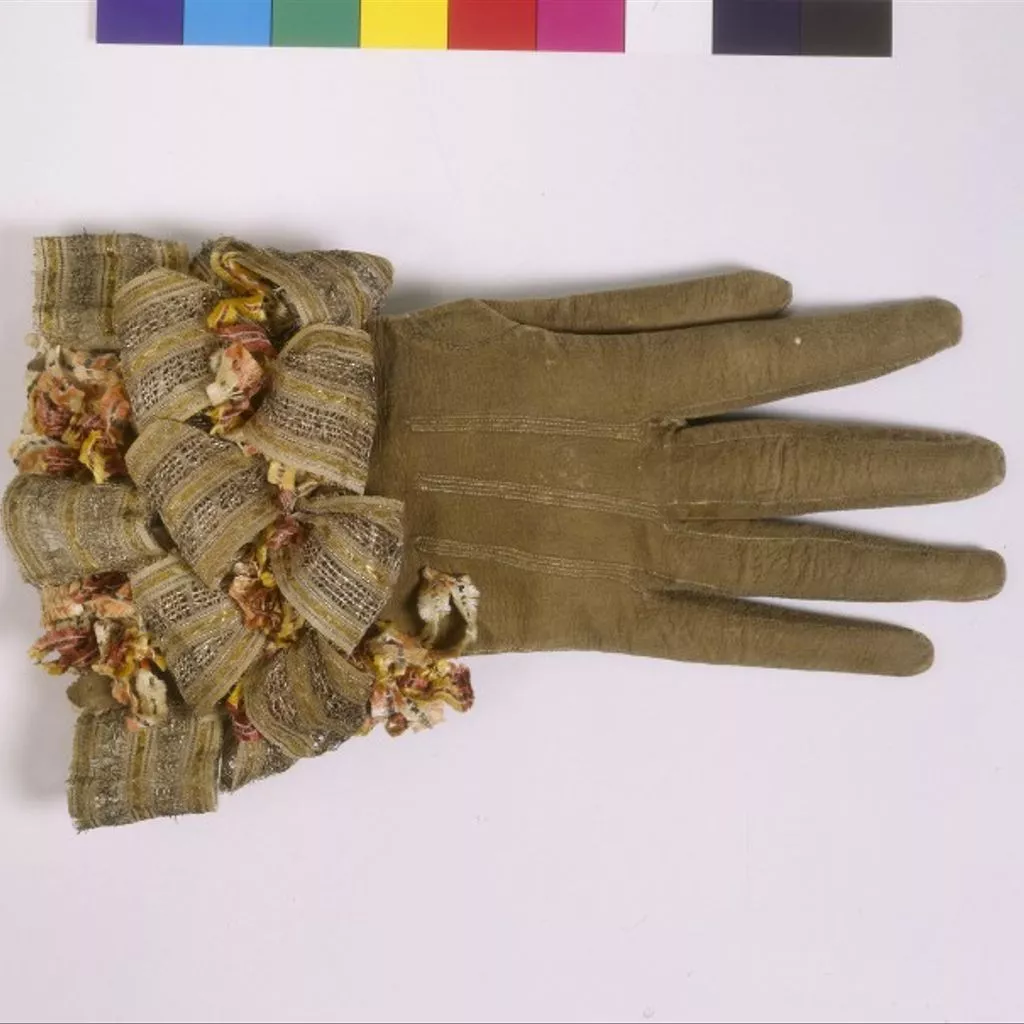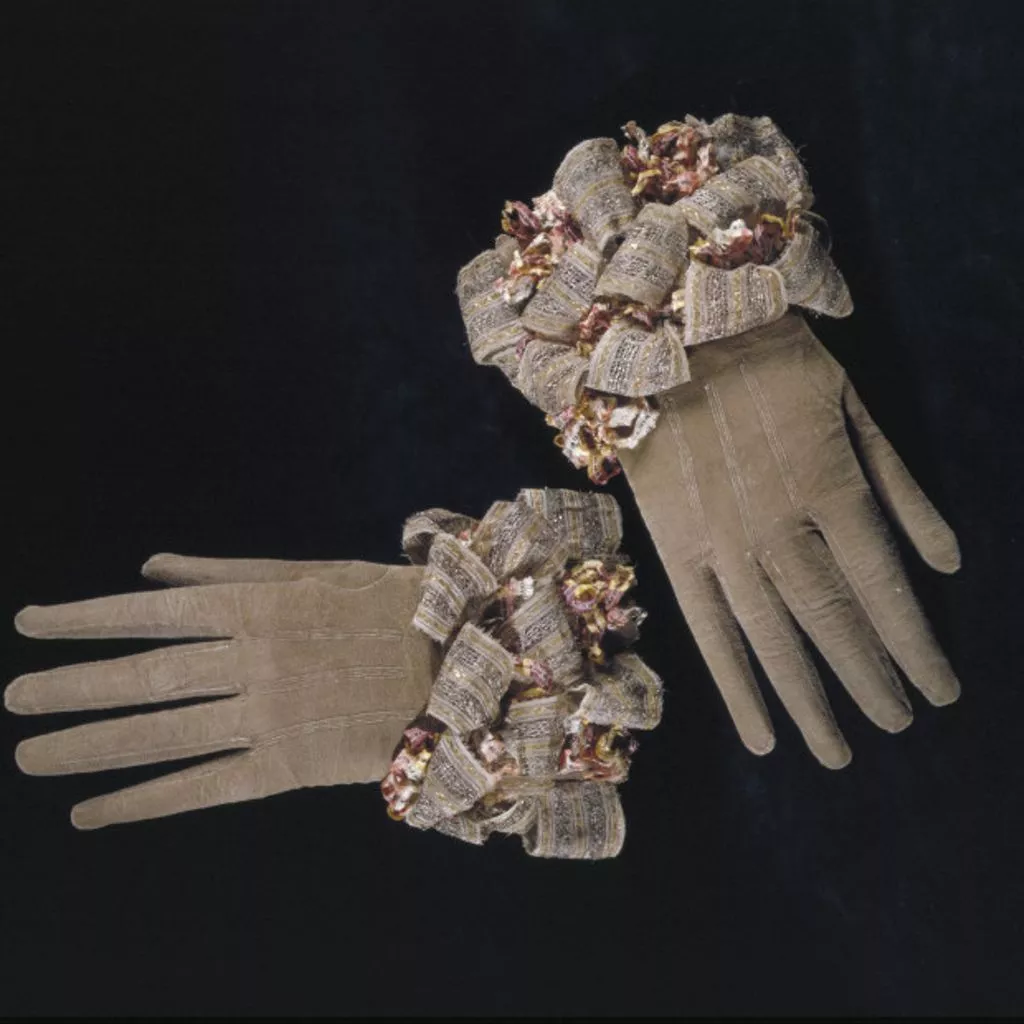1660 / 1680, England
1660 / 1680, England
- Identifier
- T.229:1, 2-1994
- Acquisition
- Acquired with the assistance of the National Heritage Memorial Fund, The Art Fund and contributors to the Margaret Laton Fund
- Collection
- Material
- Technique
- Embroidery 100%
- Embroidery 68%

- Embroidery 99%
- Embroidery 62%

- Embroidery 92%
- Embroidery 39%

- Embroidery 62%

- Embroidery 75%

- Depiction
- Floral motif 50%

- Floral motif 40%

- Floral motif 72%

- Floral motif 50%

- Geometrical motif 54%

- Geometrical motif 52%

- Floral motif 50%
- Dimension
- 23 cm (length)15.5 cm (width)
- Production time
- Production place
- Type of object
Description
The decorative gauntlet of this glove showed off the wealth and status of the wearer. The embroidery of the early 17th century has given way to the lavish use of ribbons in the 1660s and 1670s.
Materials & Making
The ribbons have been arranged and attached in deep loops and bows covering the gauntlet of the glove. A wide ribbon of white silk, silver-gilt and silver has a gauze weave creating an open effect. At the selvedges (the edges of the weave, which were finished in such a manner as to prevent fraying) silk threads create a picot edge (an edge formed of small loops of twisted threads). The narrow ribbons are of ivory and salmon-pink silk with silver strips. Here, the selvedges have been cut to create a decorative frayed edge.
Trading
Ribbon was originally woven on a narrow hand-loom, but only one piece could be made at a time. New technology in the 17th century allowed one worker to operate up to 24 looms at once. The increased availability of ribbons influenced fashion, particularly men's wear. Breeches, doublets (close-fitting body garments) and gloves were liberally festooned with great bunches of decorative ribbons.
Disapproval
Moralists condemned the extravagant use of ribbons in dress, especially by men. In 1661 the diarist John Evelyn commented on one young 'fashion victim' as having 'as much Ribbon on him as would have plundered six shops, and set up Twenty Country Pedlars; all his body was dres't like a May-pole'. British Galleries: Two types of ribbon decorate this glove. Such deep clusters were fashionable between 1660 and 1680. Traditionally, ribbon and braid had been woven on hand looms. By about 1650 the new Dutch engine loom could weave up to 24 ribbons at a time. This increase in production may explain their extravagant use on dress in this period. [27/03/2003]
